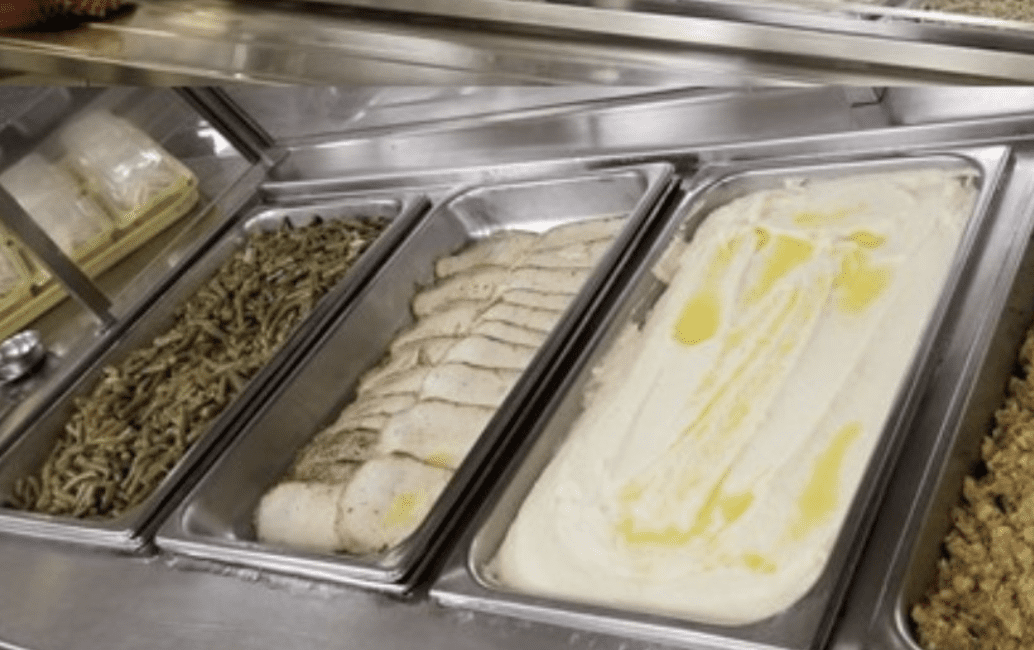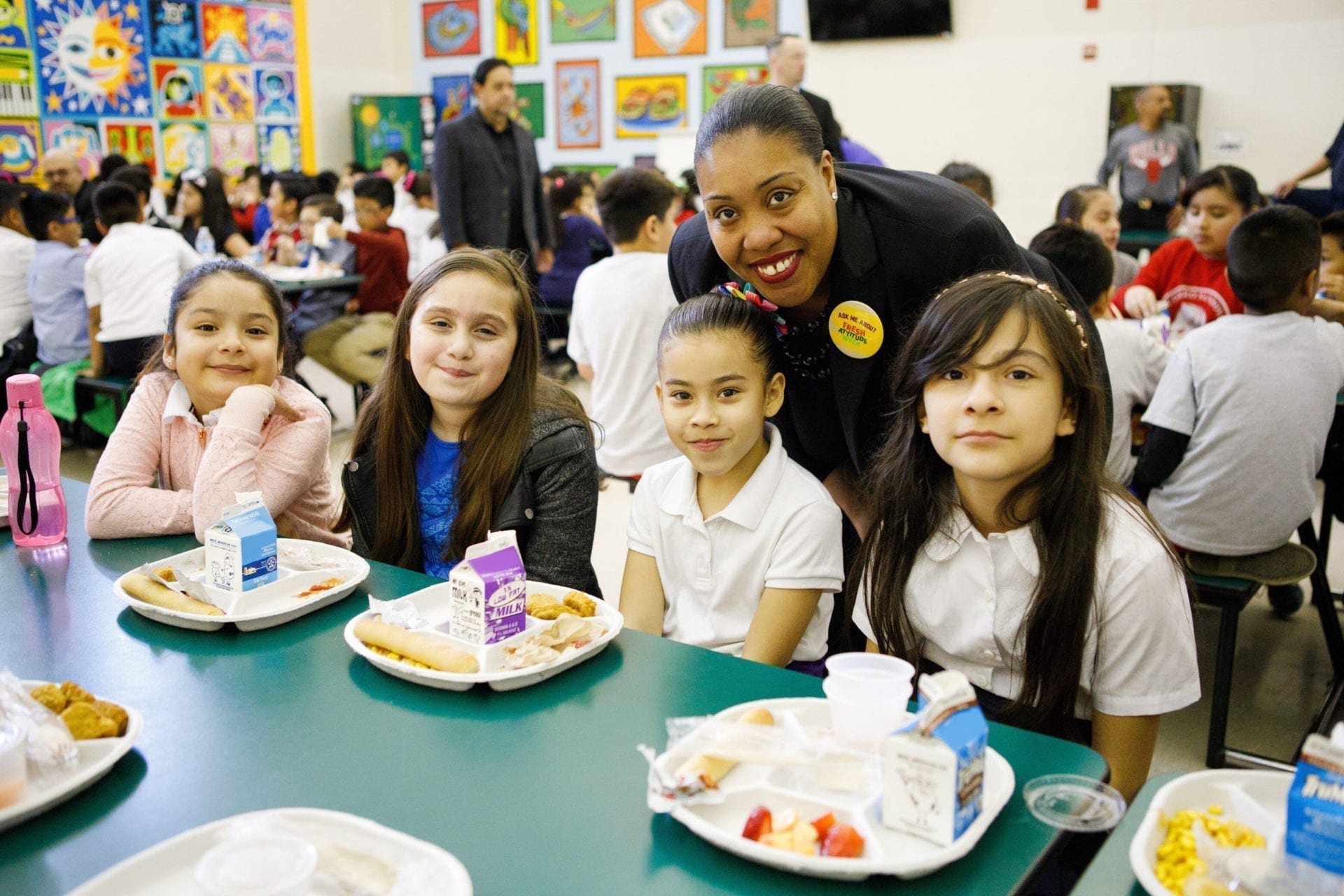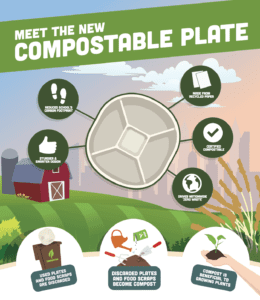Strategic Procurement:
The Urban School Food Alliance proactively works on crafting bids and policies that focus on elevating school meals for the health and wellness of students. Quality food, environmentally friendly supplies, forecasting demand for local sourcing, and lowering overall costs are the core mission for the Alliance when it comes to procurement.

Nutrition Standards
The Urban School Food Alliance continues to support research-based nutrition policy and guidelines that boost student achievement and educate young people about healthy choices and lifestyles. We are committed to serving students healthy, flavorful meals with the use of local products as often as possible. The members of the Alliance work hard to gain student approval of menu items that meet the strong nutrition standards set through federal regulations.
Learn more about Strategic Procurement
To accomplish these goals, the Alliance has:
- Established a procurement committee and hired a specialist in 2020 to help navigate the complicated processes related to procurement.
- Developed a procurement database for our member districts, including a personalized dashboard for each district to provide insights and support data-driven procurement decisions.
- Worked with producers to support local economies and promote fresh, high-quality foods. Member districts are on track to procure nearly $100 million in local items by the 2020-2021 school year.
No Antibiotic-Ever Chicken
The Alliance’s landmark action focused on chicken because it is one of the most popular items served in school cafeterias across the country. This transformational move had a dramatic impact on the quality of school meals and also helped push the entire food industry to move away from animals raised with improper antibiotic use.

Learn more about No Antibiotic-Ever Chicken
Why Limit Antibiotic Use?
Most antibiotics sold in the United States are given to livestock, not humans and often not used to treat sick animals but to speed growth and help their livestock survive crowded and unsanitary conditions. When producers use antibiotics again and again, some bacteria become resistant, multiply and spread. This misuse in meat and poultry production contributes to the spread of antibiotic-resistant bacteria. The widespread overuse and misuse of antibiotics in food animals contributes to the dangerous rise of antibiotic resistance in humans. Limiting the use of antibiotics in poultry and other meats could slow the development of drug-resistant bacteria and protect both human and animal health over time.
Antibiotic-Free Chicken Standard 2014 updated July 2024
Informed by suppliers, non-profit partners, and government agencies, the Alliance committed to the following standard:
The Urban School Food Alliance Standard requires that all chicken products must be produced under a USDA Process Verified Program that includes compliance with No Antibiotics Ever (NAE). The use of vegetarian feed is preferred but not required and vendors able to comply should provide proof during the qualification process.

CRAU Turkey Standard
In March 2021, USFA announced its new standard for responsible antibiotic use in turkey products to get healthier food for students and fight antibiotic resistance.
“Issuing this standard for responsible antibiotic use in turkey is the next step in the Urban School Food Alliance’s commitment to provide the healthiest food to students in all its member districts,” said Dr. Katie Wilson, Executive Director of the Urban School Food Alliance. “By leveraging the collective purchasing power of Alliance districts, this standard sends an important message to the turkey industry and helps to improve the quality of food sold to the school marketplace.”
Learn more about CRAU turkey
Urban School Food Alliance Responsible Antibiotic Use Turkey Standard
Informed by suppliers, non-profit partners, and government agencies, the Urban School Food Alliance has created the following standard:
The Urban School Food Alliance Responsible Antibiotic Use Turkey Standard requires that all turkey products must be produced under a USDA process verified program that includes compliance with the Certified Responsible Antibiotic Use Standard (CRAU).
When available, chicken and turkey products uphold no antibiotics ever (NAE) or certified responsible use of antibiotics (CRAU). NAE products are most favorably considered.
Why turkey?
Turkey is the second most served protein in Alliance schools, coming after chicken, for which the Alliance issued a similar standard. According to research from NRDC (Natural Resources Defense Council), the turkey industry is the most intensive user of medically important antibiotics, dispensing more drugs per kilogram of animal than any other sector.
Local Foods
Alliance member districts value the power of local procurement to support and lift their communities with more dollars in the local economy, job creation and commitment to sustainable business practices. However, local purchasing requires creative thinking to overcome challenges along the way.

Learn more about Local Foods
One concern is availability of items popular in school meal programs. Short growing seasons in some parts of the country or lack of availability in a region are regular concerns when buying locally. For example, Chicago Public Schools serves one million pounds of local apples each school year, however apples won’t grow locally in South Florida. And, while oranges are readily available in Florida, “Maryland does not have the climate to produce oranges that are popular with the students,” Elizabeth Marchetta, Executive Director of Nutrition Services for Baltimore City Public Schools, said.

Sustainability
As Alliance members move forward in their sustainability journey, they are determined to push their communities towards healthier more environmentally friendly practices as well. Institutional composting is still not commonplace in all Alliance member communities. Half of New York City’s schools are receiving institutional organic waste picks up from the department of sanitation, as part of a citywide zero waste plan, while other districts are limited by the capacity of their locality. “When we first started looking at the [compostable] tray, we met with the city to discuss composting. The composter that they use was unable to handle the volume of one of our schools, and we have more than 200,” remarked one district. But that isn’t stopping the Alliance. Members are interested in driving the industry and proving there is a need and market for institutional composting. Many districts are working together with their cities to see this idea come to fruition.
Learn more about Sustainability
The compostable plate is an example of the Alliance’s work toward positive change on the national level. The plate has a sturdier and smarter design made from recycled paper, reduces the carbon footprint of each school and is supporting the trend nationwide toward zero waste. This shift among Alliance districts alone has resulted in 360 million fewer polystyrene trays each year going into landfills, however the impact reaches significantly farther. The work of the Alliance has made compostable plates and other compostable trays, bowls and meal service wares a reality for countless school districts across the country.
Alliance members are putting sustainability ahead of their bottom line and because of this work together, they are making it possible for school districts everywhere to do the same. Parham remarks, “It was an experiment to try to buy through a different process and it paid off. The bottom line is we were able to lower the cost of that pulp fiber tray through our work together. The Urban School Food Alliance was able to make that happen.”
Compostable Plate

In 2015, Urban School Food Alliance member districts challenged the industry to develop an innovative and affordable environmentally-friendly plate to replace the standard polystyrene tray found in school cafeterias and landfills across the country. The landmark collaboration lead to the adoption of a five-compartment compostable plate in many of our member districts.
Food and nutrition directors in the Alliance specified the round shape to allow students to eat their food off of plates like they do at home, replacing the institutional rectangular lunch tray. In addition to their signature shape, the compostable plates have many benefits for students, schools, and communities:
- Sturdier and smarter design
- Reduces schools’ carbon footprints
- Made from recycled paper
- Certified compostable
- Drives nationwide ‘zero waste’
Interested in learning more about the compostable tray? Trying to improve sustainability in your district? The compostable plate is purchased through Imperial Dade and is a Huhtamaki product. Please contact them for further information and requests.

Join the Conversation
The latest news and headlines from Urban School Food Alliance
Urban School Food Alliance Launches District Pilot Project to Revolutionize School Food Procurement for Healthier Meals
Oct 11, 2025
Efficient procurement serves as a powerful lever for driving meaningful outcomes in school nutrition programs....
Baltimore City Public Schools: Behind the scenes: How City Schools’ Food and Nutrition team prepares for the new school year
Oct 2, 2025
Back-to-school means different things to different people, but for the Food and Nutrition team, it marks the...
Urban School Food Alliance Membership Welcomes Baltimore County Public Schools as Newest Member, Increasing Reach to 4.5 Million Students
Sep 29, 2025
USFA Expands Membership furthering vision of being the leading change agent for school nutrition WASHINGTON,...
TIME: Why It’s So Hard to Make School Lunches Healthier
Aug 25, 2025
Students at the Tahoe Truckee Unified School District in California dine on locally sourced fruits and...